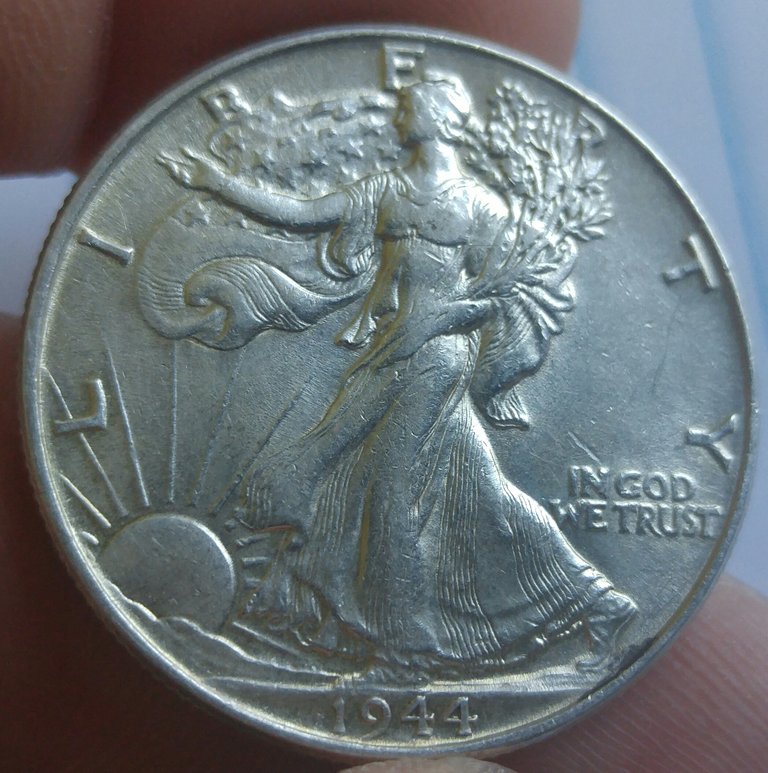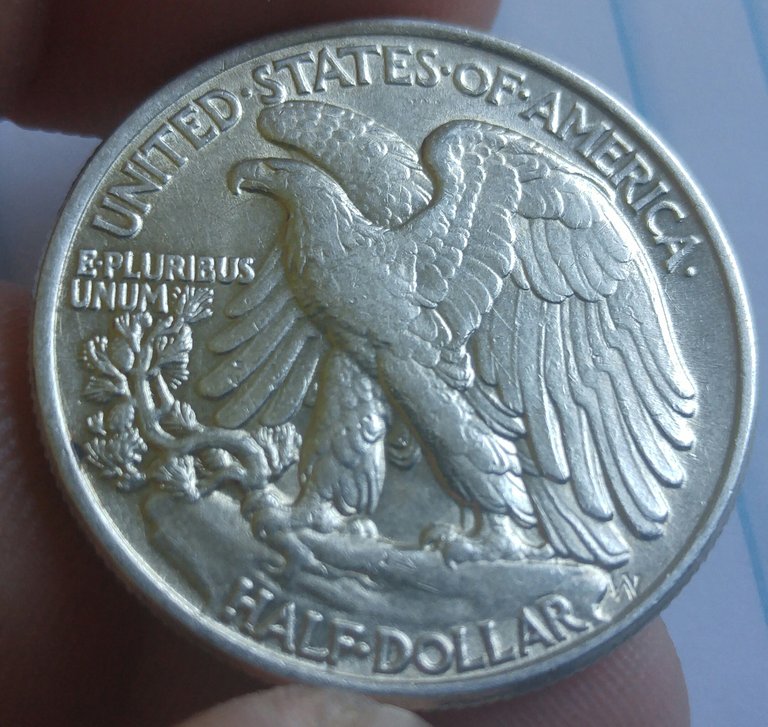Before we begin, please take a moment and admire how absolutely beautiful this design is:


These coins are stunning!
Look Familiar?
If you collect coins or bullion but haven't seen one of these babies yet, you might be wondering why this coin looks so familiar. The American Silver Eagle, one of the most popular silver bullion coins among stackers, adopted the obverse design of this coin when they were put into production in 1986. By that time, the Walking Liberty Half Dollar had been out of circulation for almost 40 years. The Walking Liberty replaced the Barber Half Dollar in 1916 and was subsequently replaced by the Franklin Half Dollar in 1948, making 1947 the last year for Walking Liberties. The Walking Liberty was the second half-dollar design accepted by the US government and marked the first time that the director of the Mint used their power to create new coinage designs. The director of the US Mint could only replace a coin that had been in circulation for 25 years, with 1916 marking the 25th anniversary of the Barber series of coins. The previous Barber coins were virtually identical across the series, and the director of the Mint at this time wished for the new series to have distinct designs for each coin in production. This trend of distinct nickel, dime, quarter and half dollar coins continues to this day.
Look at That Beautiful Bird
The obverse is a fantastic design, no doubt - but I'm far more in love with the reverse. The reverse of the Walking Liberty Half is in my opinion far superior to current eagle designs on the American Silver Eagle, US quarter and other coins. While other coins have chosen for a more flat and unrealistic look, the eagle on the Walking Liberty actually looks like a bird one could see in real life, rather than a deified emblem that is merely a symbol for freedom. The feathering in particular has extremely fine detail to it and wear on the coin shows up very quickly, especially around the chest feathers. The same goes for the obverse of the coin - in my example above, you can see highly apparent wear on Liberty's dress and laurel branches. While this is not a perfect example of the coin, it is still in good condition and was not circulated very much - the fine detail makes it easy to grade the Walking Liberty Half because there is so little empty space in the design, especially around the center of the coin (which is the most prone area to wear).
Should I Buy This Coin?
Uh...YES! I love these coins, but I actually don't have that many of them in my collection. It's not that they are exceedingly rare, but they are an old coin and either modern junk silver or bullion coins tend to be the better choice when buying purely for silver value. However, these coins are so breathtaking that I highly recommend anyone to buy several and hold onto them. They do not carry much of a numismatic value over spot, but high quality examples are sought after, especially for certain key dates. The 1916 is a good year to look for in uncirculated condition, but highly circulated examples are common. Another date to keep your eye on is the 1921, which has the smallest mintage of all years because of high production of Morgan Silver Dollars and later the Peace Dollar. If you're interested in why 1921 was such a strange year for US silver coins, please check out my other article - Introduce Myself - 1921 Morgan Silver Dollar